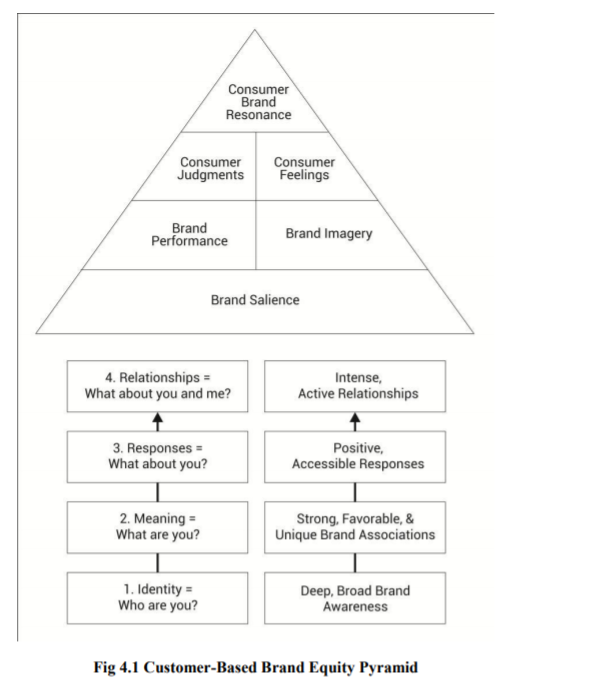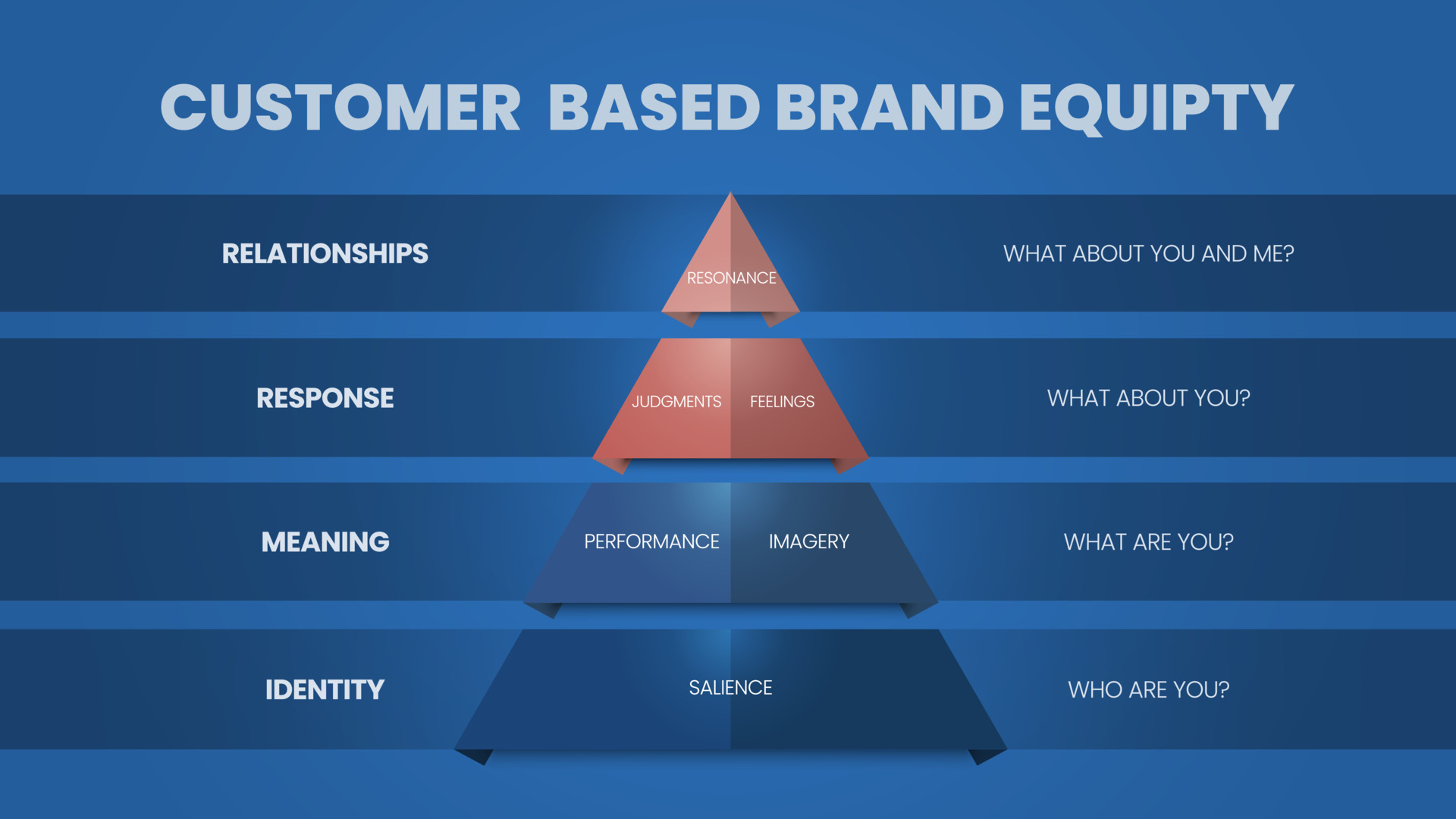Two questions often arise in brand marketing: What makes a brand strong? and how do you build a strong brand? To help answer both, we introduce the concept of customer-based brand equity (CBBE). Although a number of useful perspectives concerning brand equity have been put forth, the CBBE concept provides a unique point of view on what brand equity is and how it should best be built, measured, and managed.
The CBBE concept approaches brand equity from the perspective of the consumer, whether the consumer is an individual or an organization or an existing or prospective customer. Understanding the needs and wants of consumers and organizations and devising products and programs to satisfy them are at the heart of successful marketing.
In particular, marketers face two fundamentally important questions: What do different brands mean to consumers? And how does the brand knowledge of consumers affect their response to marketing activity?
The basic premise of the CBBE concept is that the power of a brand lies in what customers have learned, felt, seen, and heard about the brand as a result of their experiences over time. In other words, the power of a brand lies in what resides in the minds and hearts of customers. The challenge for marketers in building a strong brand is ensuring that customers have the right type of experiences with products and services and their accompanying marketing programs so that the desired thoughts, feelings, images, beliefs, perceptions, opinions, and experiences become linked to the brand.
We formally define customer-based brand equity as the differential effect that brand knowledge has on consumer response to the marketing of that brand. A brand has positive customer-based brand equity when consumers react more favourably to a product and the way it is marketed when the brand is identified than when it is not (say, when the product is attributed to a fictitious name or is unnamed). Thus, customers might be more accepting of a new brand extension for a brand with positive customer-based brand equity, less sensitive to price increases and withdrawal of advertising support, or more willing to seek the brand in a new distribution channel. On the other hand, a brand has negative customer- based brand equity if consumers react less favourably to marketing activity for the brand compared with an unnamed or fictitiously named version of the product.
The simplest way to illustrate what we mean by customer-based brand equity is to consider one of the typical results of product sampling or comparison tests. In blind taste tests, two groups of consumers sample a product: one group knows which brand it is, the other doesn‘t. Invariably, the two groups have different opinions despite consuming the same product. These branding effects occur in the marketplace too. For example, at one time, Hitachi and General Electric (GE) jointly owned a factory in England that made identical televisions for the two companies. The only difference was the brand name on the television. Nevertheless, the Hitachi televisions sold for a $75 premium over the GE televisions. Moreover, Hitachi sold twice as many sets as GE despite the higher price.
When consumers report different opinions about branded and unbranded versions of identical products which almost invariably happens—it must be the case that knowledge about the brand, created by whatever means (past experiences, marketing activity for the brand, or word of mouth), has somehow changed customers‘ product perceptions. This result has occurred with virtually every type of product—conclusive evidence that consumers‘ perceptions of product performance are highly dependent on their impressions of the brand that goes along with it. In other words, clothes may seem to fit better, a car may seem to drive more smoothly, and the wait in a bank line may seem shorter, depending on the particular brand involved.
Brand Equity as a bridge
Thus, according to the customer-based brand equity concept, consumer knowledge drives the differences that manifest themselves in terms of brand equity. This realization has important managerial implications. For one thing, brand equity provides marketers with a vital strategic bridge from their past to their future.
How to Build Customer-Based Brand Equity?
Building a strong brand is the goal of many organizations. Building a strong brand with significant equity is seen as providing a host of possible benefits to a firm, including greater customer loyalty and less vulnerability to competitive marketing actions and marketing crises, larger margins as well as more favourable customer response to price increases and decreases, greater trade or intermediary cooperation and support, increased marketing communication effectiveness, and licensing and brand-extension opportunities.
With this keen interest in brand building, two questions often arise:
1. What makes a brand strong? and
2. How do you build a strong brand?
To help answer both of these questions, there is a model of brand building called the Customer-Based Brand Equity model. Although a number of useful perspectives concerning brand equity have been put forth, the Customer Based Brand Equity model provides a unique perspective on what brand equity is and how it should best be built, measured, and managed.
The development of the Customer-Based Brand Equity model was driven by three goals. First, the model had to be logical, well-integrated, and grounded. The model needed to reflect stateof-the-art thinking about branding from both an academic and industry point of view. Second, the model had to be versatile and applicable to all possible kinds of brands and industry settings. As more diverse applications of branding continued to emerge for products, services, organizations, people, places, and so forth, the model needed to have far-ranging relevance. Third, the model had to be comprehensive with enough breadth to cover important branding topics as well as enough depth to provide useful insights and guidelines. The model needed to help marketers set strategic direction and inform their brand-related decisions.
With this broad set of objectives in mind, the Customer-Based Brand Equity model was developed. The basic premise of the model is that the power of a brand lies in what customers have learned, felt, seen, and heard about the brand overtime. In other words, the power of a brand resides in the minds of customers. The challenge for marketers in building a strong brand is ensuring that customers have the right type of experiences with products and services and their accompanying marketing programs so that the desired thoughts, feelings, images, beliefs, perceptions, opinions, and so on become linked to the brand.
The Four Steps of Brand Building
Building a strong brand, according to the Customer-Based Brand Equity model, can be thought of in terms of a sequence of steps, in which each step is contingent upon the successful completion of the previous step. All steps involve accomplishing certain objectives with customers, both existing and potential. The first step is to ensure identification of the brand with customers and an association of the brand in customers‘ minds with a specific product class or customer need. The second step is to firmly establish the brand meaning in the minds of customer‘s by strategically linking a host of tangible and intangible brand associations. The third step is to elicit the proper customer responses to this brand identity and brand meaning. The fourth and final step is to convert brand response to create an intense,
active loyalty relationship between customers and the brand.
These four steps represent a set of fundamental questions those customers in variably ask about brands, implicitly if not explicitly:
Who are you? (brand identity)
What are you? (brand meaning)
What about you? What do I think or feel about you? (brand responses)
What about you and me? What kind of association and how much of a connection would I like to have with you? (brand relationships)
There is an obvious sequence in this ―branding ladder, that is, meaning cannot be established unless identity has been created; responses cannot occur unless the right meaning has been developed; and a relationship cannot be forged unless the proper responses have been elicited.
Brand building blocks
Enacting the four steps to create the right brand identity, brand meaning, brand responses, and brand relationships are a complicated and difficult process. To provide some structure, it is useful to think of six ―brand-building blocks‖ to accomplish the four steps necessary to create a strong brand. To connote the sequencing involved, these building blocks can be assembled as a brand pyramid. Creating significant brand equity involves reaching the pinnacle of the pyramid and will only occur if the right brand-building blocks are in place. The corresponding brand steps represent different levels of the pyramid as illustrated:

Read CBBE in a more advanced manner here – Marketing Concept | Customer-Based Brand Equity Model (CBBE)
To read more content like this, subscribe to our newsletter
Go to the full page to view and submit the form.

